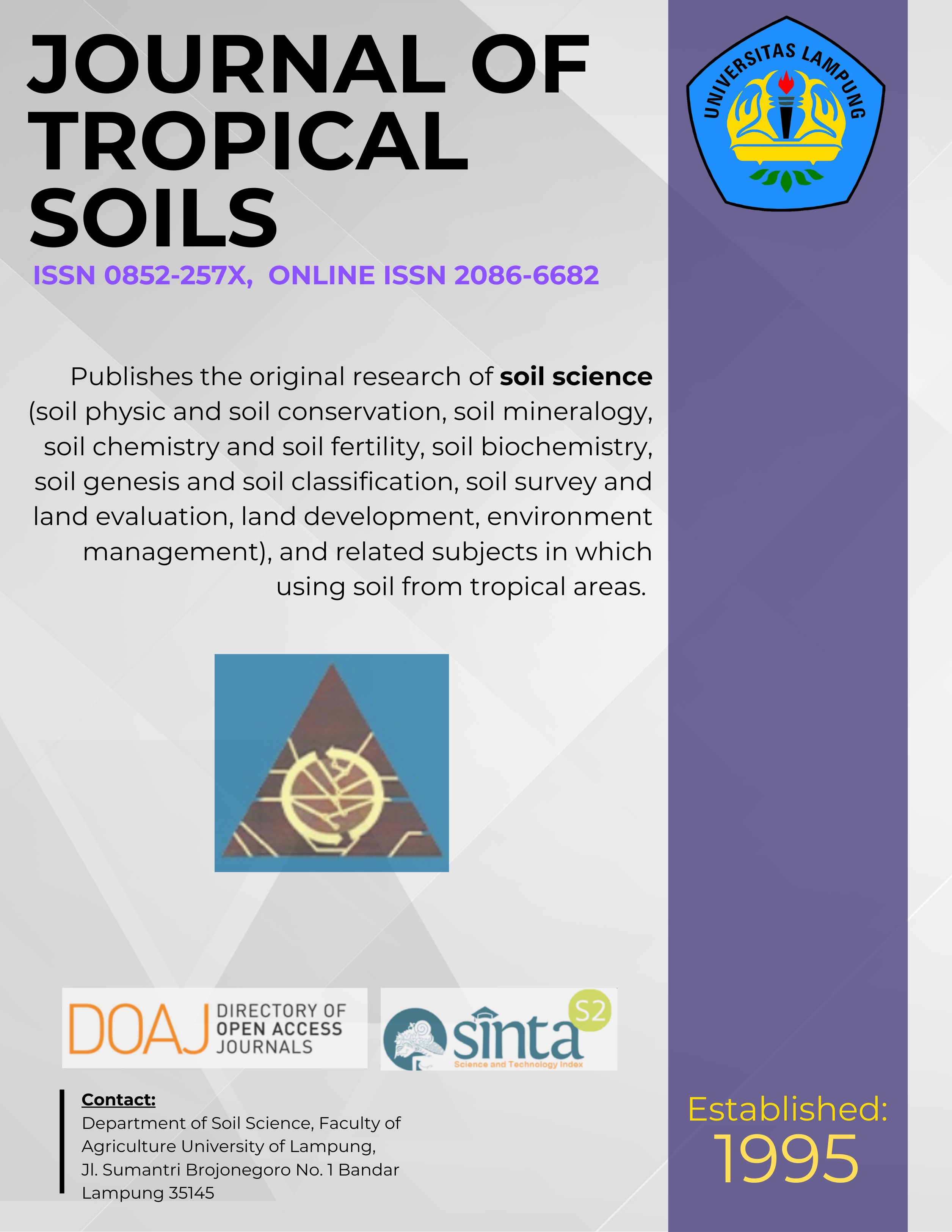Response of Some Rice Cultivars in New Opening Paddy Fields with High Fe2+ Using Multi-packet Technology
Main Article Content
Abstract
The main obstacle to increase rice yield in new opening paddy fields, is that high levels of dissolved ferrous ions
(Fe2+) which toxic to plants. This research aimed to study the growth and yield of several rice cultivars tolerant to
Fe2+ in the new opening paddy fields with multi-packet technology. The experiment was conducted from April to
December 2010, at the new opening pay fields in Koto Baru of Dharmasraya District, West Sumatra. Experiments
used a factorial in a Completely Randomized Design with three replications. The first factor was, selected rice
varieties which were: Krueng Aceh; IR 36; Tukad Balian; Ciherang; and Cisokan. The second factor was the
different plant spacing which were a 30 × 30 cm with two seeds per hole, and Plant spacing (10 × 10) × 30 × (10 × 10)
cm with one seed per hole. The rice cultivation with packet technology can improved the growth and yield of paddy
rice cultivated in new opening paddy field high in Fe2+. Technology package consisting a combination of rice
variety (Krueng Aceh, IR36, and Tukad Balian) + SRI system + peat amelioran 20 Mg ha-1 + plant spacing (10 × 10)
× 30 × (10 × 10) cm with one seed per hole, had the best growth and yield of rice cultivated in the new opening fields
high in Fe2+, especially in Koto Baru of Dharmasraya District, Krueng Aceh was a variety with the highest grain production by 5.65 Mg ha-1.
Keywords: Fe2+; new fields; rice cultivar; technology
[How to Cite: Utama MZH, I Wahidi and Sunadi. 2012. Response of Some Rice Cultivars in New Opening Paddy Fields with High Fe2+ Using Multi-packet Technology. J Trop Soils, 17 (3) : 234-244. doi: 10.5400/jts.2012.17.3.239]
[Permalink/DOI: www.dx.doi.org/10.5400/jts.2012.17.3.239]
Â
Downloads
Article Details
Section
License for Authors
Authors who publish with this journal agree to the following terms:
- Authors retain copyright and grant the journal right of first publication with the work simultaneously licensed under a Creative Commons Attribution License that allows others to share the work with an acknowledgement of the work's authorship and initial publication in this journal.
- Authors are able to enter into separate, additional contractual arrangements for the non-exclusive distribution of the journal's published version of the work (e.g., post it to an institutional repository or publish it in a book), with an acknowledgement of its initial publication in this journal.
- Authors are permitted and encouraged to post their work online (e.g., in institutional repositories or on their website) prior to and during the submission process, as it can lead to productive exchanges, as well as earlier and greater citation of published work (See The Effect of Open Access).
License for Regular Users
Other regular users who want to cite, distribute, remix, tweak, and build upon author’s works, even for commercial purposes, should acknowledge the work’s authorship and initial publication in this journal, licensed under a Creative Commons Attribution License.

